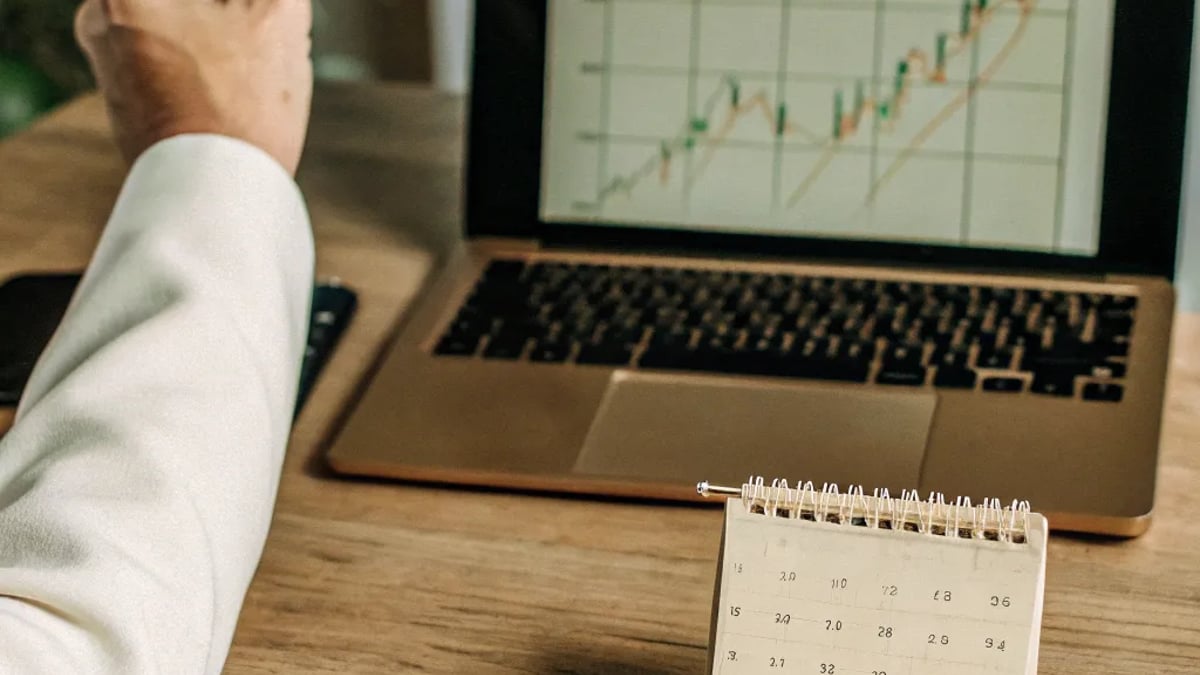
Starting small with investing felt like dropping pennies into a vast ocean. When I first considered putting aside $100 monthly toward investments, I questioned whether such a modest amount could ever make a meaningful difference. That hesitation nearly stopped me from beginning altogether – a mistake that would have cost me thousands in potential growth.
The Reluctant Beginning of My Investment Journey
I didn't grow up in a household where investing was discussed at the dinner table. My parents were savers, not investors. They tucked away money in low-interest savings accounts and considered that financial prudence. When I landed my first full-time job after college, my financial knowledge consisted primarily of "spend less than you earn" and "avoid credit card debt."
The catalyst for my investment journey wasn't some grand financial epiphany. It was a casual conversation with a coworker who mentioned she'd been investing $150 monthly since her first paycheck. I remember feeling a mix of curiosity and regret – why hadn't I started earlier?
That weekend, I fell down a research rabbit hole. I discovered that investing even small amounts could yield significant returns over time due to compound interest. The math was compelling, but the barriers felt overwhelming: minimum investment requirements, complicated terminology, and the fear of losing what little I could set aside.

After weeks of hesitation, I decided to start with what I could comfortably afford – just $100 a month. It wasn't much, but it was a beginning.
The Power of Starting Small: $100 Monthly Investments
The most surprising thing about starting with just $100 a month was discovering this wasn't actually unusual. Many successful investors began with similar modest contributions.
Let's look at the potential growth of $100 monthly investments over time, assuming an average annual return of 8% (the approximate historical average of the S&P 500, adjusted for inflation):
| Time Period | Total Contributed | Potential Value |
|---|---|---|
| 10 years | $12,000 | $18,295 |
| 20 years | $24,000 | $58,902 |
| 30 years | $36,000 | $149,036 |
| 40 years | $48,000 | $349,101 |
These figures illustrate why financial experts like Dave Ramsey often state that investing $100 monthly from age 25 to 65 could potentially grow to over $1 million, depending on market performance. While exact returns are impossible to predict, the principle remains valid – small, consistent investments can grow substantially over decades.

The math was compelling, but actually getting started presented practical challenges.
How I Overcame the "Too Small to Matter" Mindset
The biggest psychological hurdle was believing that $100 monthly contributions were too insignificant to bother with. I'd think, "What's the point? This won't make me rich."
This thinking is what behavioral economists call "present bias" – the tendency to value immediate gratification over future benefits. I struggled with this until I reframed my perspective:
- I stopped comparing my beginning to others' middle chapters
- I focused on percentage growth rather than dollar amounts
- I viewed small investments as building the habit, not just the balance
What ultimately shifted my mindset was creating a simple spreadsheet that projected my investments over decades. Seeing those numbers grow year after year – even if the initial growth seemed painfully slow – helped me appreciate the long game.
"The best time to plant a tree was 20 years ago. The second best time is now." This proverb became my mantra whenever I felt discouraged by my modest beginning.
Finding Investment Platforms That Welcome Small Investors
When I started investing around 2018, many traditional brokerages had minimum investment requirements that made $100 monthly contributions challenging. Fortunately, the investment landscape has evolved dramatically since then.
I initially chose Acorns, which allowed me to start with just $5. Their round-up feature automatically invested my spare change from everyday purchases, making the process painless. While their $1 monthly fee seemed small, I eventually realized it represented a significant percentage of my small contributions.
After six months, I switched to M1 Finance, which offered:
- No minimum investment requirements
- Fractional shares (allowing me to buy portions of expensive stocks)
- No management fees for basic accounts
- Automated investing schedules
Today, nearly all major brokerages accommodate small investors. Platforms like Robinhood, Fidelity, Charles Schwab, and Vanguard have eliminated minimum investment requirements for many of their offerings and allow the purchase of fractional shares.
What Did I Actually Invest In?
With limited funds, I needed to maximize diversification while minimizing fees. After considerable research, I settled on a simple approach:
- Index ETFs as my foundation: I put 80% of my monthly $100 into VTI (Vanguard Total Stock Market ETF), which gave me exposure to the entire U.S. stock market for a minimal expense ratio of 0.03%.
- Individual stocks as my education: I allocated the remaining 20% to individual companies I understood and believed in long-term. This wasn't just about potential returns – it motivated me to research companies, understand financial statements, and follow market trends.
This approach wasn't perfect. I made mistakes with some individual stock picks, but the index fund foundation provided stability while I learned.
For someone starting today, I'd recommend a similar approach, possibly with an even stronger emphasis on broad-market index funds until you've developed investment knowledge.
How Do You Actually Make Money From $100 Monthly Investments?
When I began investing, I had a vague notion that stocks "went up over time," but I didn't fully understand the mechanics of investment returns. Here's what I've learned:
- Capital appreciation: As the value of stocks or funds increases, your investment grows. This is the most obvious form of return.
- Dividend reinvestment: Many companies share profits with shareholders through dividends. Reinvesting these dividends – buying more shares automatically – significantly accelerates growth over time. My VTI holdings currently yield around 1.4% in dividends annually.
- Dollar-cost averaging: By investing a fixed amount monthly, I naturally buy more shares when prices are low and fewer when prices are high. This strategy reduces the impact of market volatility and has worked well through several market corrections.
The beauty of small, regular investments is that they take advantage of all three mechanisms without requiring market timing or complex strategies.
The Psychological Benefits I Didn't Expect
Starting with $100 monthly investments delivered financial benefits I anticipated, but the psychological impacts surprised me:
- Reduced financial anxiety: Having even a small investment portfolio created a buffer against financial stress. I was building something.
- Increased financial literacy: Managing investments motivated me to learn about markets, economics, and personal finance more broadly.
- Improved spending discipline: Once I started tracking investments, I became more conscious of other financial decisions. I found myself questioning purchases more carefully.
- Long-term thinking: Investing naturally encourages thinking years and decades ahead, which positively influenced other life decisions.
These psychological benefits actually outweighed the financial gains during my first year, when my total investment returns were less than $100.
What About Market Downturns?
My investment journey hasn't been all smooth sailing. I've weathered several significant market corrections, including the dramatic COVID-19 crash in March 2020, when my modest portfolio temporarily lost about 30% of its value.
This experience taught me valuable lessons:
- Small investments make losses feel manageable: When my portfolio dropped by 30%, the actual dollar amount wasn't devastating since I was early in my journey.
- Regular contributions shine in downturns: Continuing my $100 monthly investments during market lows meant purchasing assets at discount prices. These "cheap" shares performed exceptionally well during the subsequent recovery.
- Emotional resilience develops with experience: Each market fluctuation became easier to handle without panicking.
For new investors starting with small amounts, market downturns should be viewed as opportunities rather than disasters – especially when you're in the accumulation phase with decades ahead.
How Has My Strategy Evolved Over Time?
What began as a $100 monthly investment has evolved significantly over the years:
- Increased contributions: As my income grew, I gradually increased my monthly investments. I followed the "save half your raises" rule, directing 50% of any income increase toward investments.
- Expanded account types: I eventually opened a Roth IRA alongside my taxable account to take advantage of tax benefits.
- Refined investment selections: While still primarily focused on index funds, I've developed a more sophisticated asset allocation strategy that includes international exposure and a small percentage of bonds.
- Automated processes: I've set up automatic transfers to ensure consistency, removing emotion and inconvenience from the equation.
The key insight is that starting small allowed me to make mistakes and adjustments when the stakes were lower. By the time I was investing larger amounts, I had developed both knowledge and emotional resilience.
Can You Really Start Investing With Just $100?
If you're wondering whether it's worthwhile to begin investing with just $100 monthly, I can unequivocally say yes. Here's why:
- Today's investment landscape is ideal for small investors: With zero-commission trades, fractional shares, and no minimum requirements at many brokerages, small investors face fewer barriers than ever.
- Time is more valuable than initial amount: A 25-year-old investing $100 monthly will likely outperform a 45-year-old investing $500 monthly by retirement age, despite contributing less overall.
- Behavioral habits matter most: Starting with small, manageable amounts builds the discipline and knowledge needed for financial success.
- You can always scale up later: Beginning with $100 doesn't mean staying at that level forever. As your income and confidence grow, you can increase contributions.
According to a Reddit discussion I recently found, many successful investors began with similarly modest amounts. One commenter noted that they started with $50 bi-weekly investments in college and now, fifteen years later, have a portfolio worth over $400,000 through a combination of increased contributions and market growth.
Common Questions About Starting Small
Won't inflation eat up my returns if I only invest $100 monthly?
Inflation is indeed a concern for all investors. However, historical data from financial research firm Morningstar shows that the S&P 500 has delivered an average annual return of about 10% before inflation since its inception (or roughly 7% after accounting for inflation). This significantly outpaces the erosion of purchasing power from inflation, which has averaged around 3% annually over the long term.
Should I wait until I can invest more substantially?
Absolutely not. The opportunity cost of waiting is substantial due to compound interest. Consider this example from Creator Bread: If you invest $100 monthly for 40 years with an 8% average annual return, you'll have approximately $349,100. If you wait just five years to start, that figure drops to $232,000. Those five years cost you over $117,000 in potential wealth.
Is it better to save until I have $1,000 or more before investing?
For most people, the behavioral advantage of starting immediately outweighs any minor efficiency gains from waiting. The habit of regular investing is more valuable than optimizing your entry point. However, if you have high-interest debt (particularly credit cards), addressing that should take priority over investing.
Final Thoughts: The Journey From $100 to Financial Freedom
Looking back on my decision to start investing with just $100 monthly, I recognize it as one of my most consequential financial choices. The actual dollar amount was less important than the habit it created and the financial education journey it initiated.
Today, my investments have grown substantially – not just because of market returns, but because that initial small step made larger steps possible later. I've increased my contributions as my income has grown, diversified across account types, and refined my investment strategy.
For anyone hesitating to begin because they can only afford a modest monthly investment, I offer this encouragement: The amount you start with matters far less than the fact that you start at all. The financial markets don't care whether you invest $100 or $10,000 – the same percentage returns apply to both.
Begin with what you have, where you are. Five or ten years from now, you'll be grateful you did.
Disclaimer: This article is for informational purposes only and does not constitute financial advice. Investment involves risk, including possible loss of principal. Past performance does not guarantee future results. Please consult with a qualified financial advisor before making investment decisions based on your specific financial situation.
Tags

About Elena Schwarzkopf the Author
Elena Schwarzkopf is a seasoned finance writer with over a decade of experience in crafting actionable budgeting tips that help individuals regain control over their finances. Known for her practical approach, Elena's insights empower readers to transform their financial habits and achieve their savings goals.
Recommended Articles
How to Begin Planning a Basic A6C Strategy
Learn how to effectively plan a basic A6C strategy with six key elements for aligning your organization's long-term goals.
The most damaging habit in your baby’s first year is not screens, sleep training, or formula. MRI scans show it shrinks the part of the brain that controls emotional safety and 94% of parents do it
Discover the most damaging habit in your baby's first year that impacts emotional safety, as revealed by MRI scans. Learn how to improve your parenting.
Mentally strong children are not born resilient they are raised by parents who avoid these 10 common mistakes
Learn to raise resilient children by avoiding 10 common parenting mistakes that hinder their emotional growth and mental strength.
PSA Levels: Effective Tips for Lowering Them Naturally
Discover effective tips to lower PSA levels naturally. Learn how diet, exercise, and lifestyle changes can promote prostate health.
How Estrogen Blockers Affect the Body
Explore how estrogen blockers impact hormonal balance, bone health, and overall well-being for both men and women. Learn about their uses and side effects.




